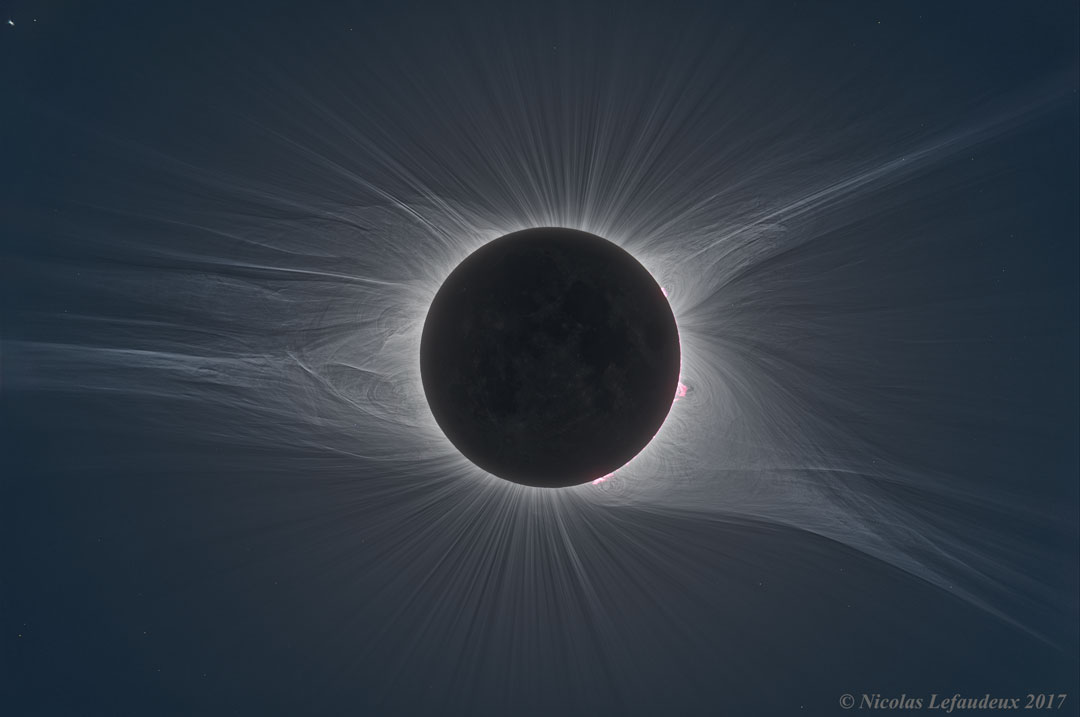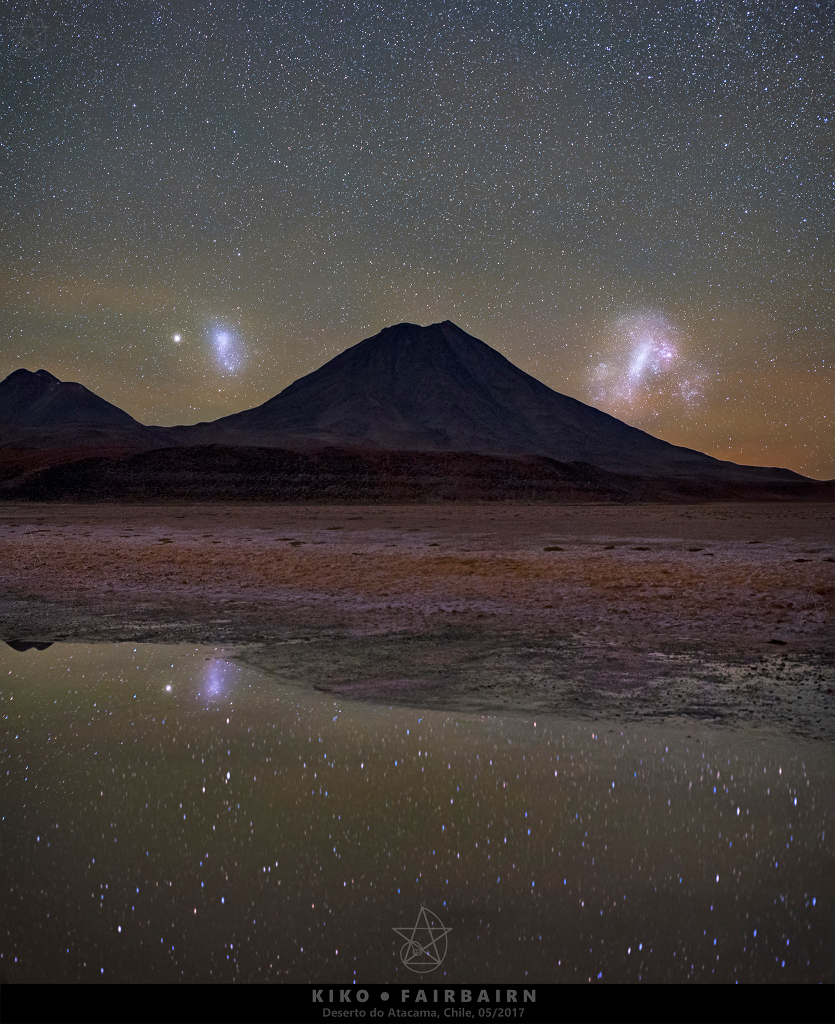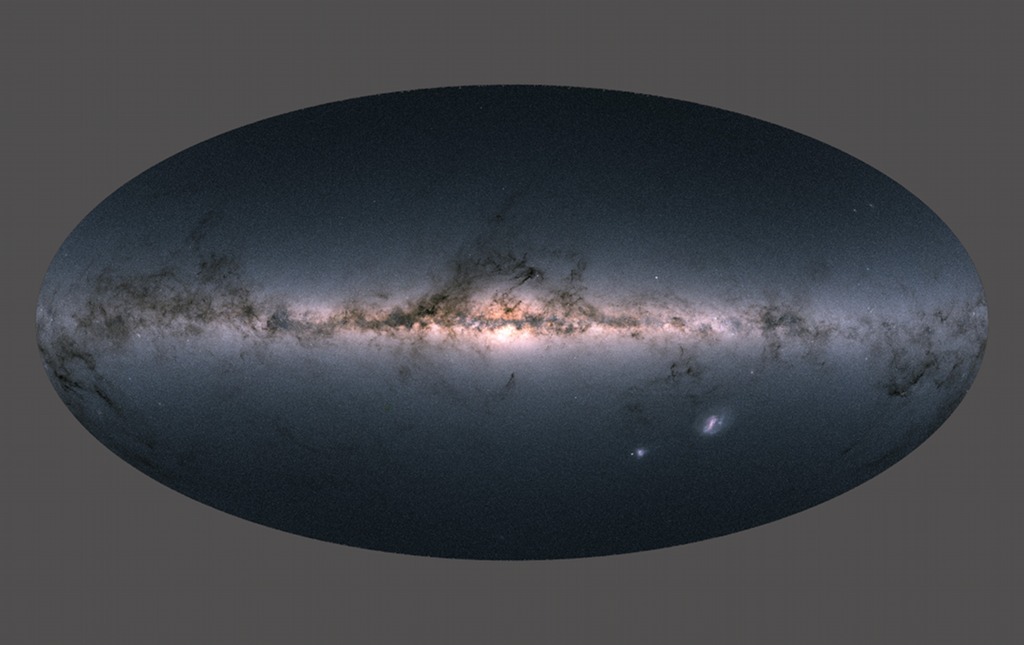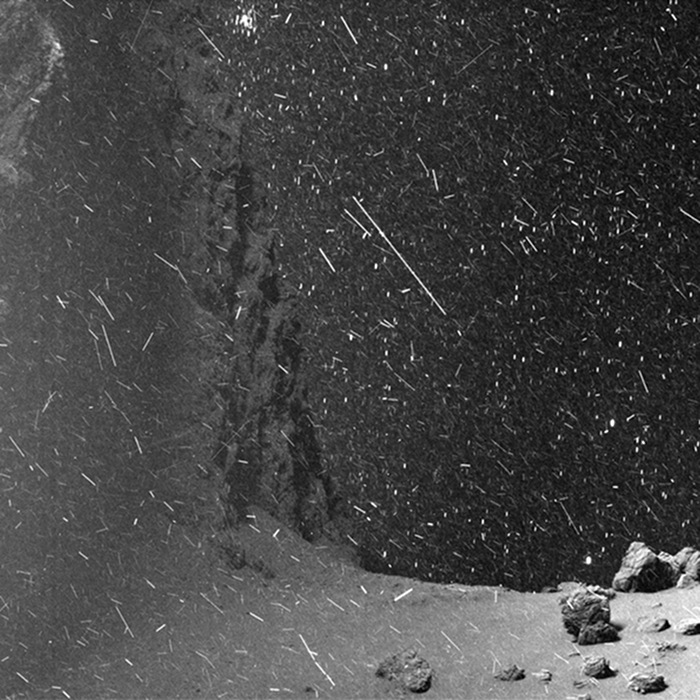| | | The exemptions for Canada, Mexico, the European Union, Australia, Argentina and Brazil previously were due to end at midnight. An official told NPR that Australia, Brazil and Argentina are expected to have deals by June 1. The official also said talks continue with Canada, Mexico and the EU. |
| |
|
|
|
| You received this message because you're subscribed to our Breaking News Alerts emails.
| Unsubscribe | Privacy Policy |
NPR
1111 N. CAPITOL ST. NE
WASHINGTON DC 20002 |
| |
| | | | 
Astronomy Picture of the Day Discover the cosmos! Each day a different image or photograph of our fascinating universe is featured, along with a brief explanation written by a professional astronomer. 2018 April 30
 Total Solar Eclipse Corona in HDR
Image Credit & Copyright: Nicolas Lefaudeux Explanation: How great was the Great American Eclipse? The featured HDR image shows it to be perhaps greater than we knew. On August 21 of last year, the Moon blocked the Sun for a few minutes along a narrow path across the USA. Although one of the most photographed events in human history, this image -- only recently completed after an extraordinary amount of digital processing -- shows one of the most detailed depictions of a solar corona ever taken. Composed of extremely hot gas, the solar corona is only visible to the unaided eye during a total solar eclipse. The featured image combined over 70 images of different time exposures. The series of complementary HDR images recovered enough detail to see motion of the solar corona. The images were taken in Unity, Oregon in the morning to get steady atmospheric seeing conditions. The next total solar eclipse visible on Earth will be in 2019 July, while the next one visible across North America and the USA will occur in 2024 April. Tomorrow's picture: aurora sunrise
< | Archive | Submissions | Index | Search | Calendar | RSS | Education | About APOD | Discuss | >
Authors & editors: Robert Nemiroff (MTU) & Jerry Bonnell (UMCP)
NASA Official: Phillip Newman Specific rights apply.
NASA Web Privacy Policy and Important Notices
A service of: ASD at NASA / GSFC
& Michigan Tech. U.
This is an automated email. If you notice any problems, just send me a note at gtracy@gmail.com. You can add and remove email addresses to this distribution list here, https://apodemail.org.Unsubscribe
Astronomy Picture of the Day Discover the cosmos! Each day a different image or photograph of our fascinating universe is featured, along with a brief explanation written by a professional astronomer. 2018 April 29
Wanderers
Video Credit: Visuals: Erik Wernquist; Music: Christian Sandquist Words & Voice: Carl Sagan Explanation: How far out will humanity explore? If this video's fusion of real space imagery and fictional space visualizations is on the right track, then at least the Solar System. Some of the video's wondrous sequences depict future humans drifting through the rings of Saturn, exploring Jupiter from a nearby spacecraft, and jumping off a high cliff in the low gravity of a moon of Uranus. Although no one can know the future, wandering and exploring beyond boundaries -- both physical and intellectual -- is part of the human spirit and has frequently served humanity well in the past. Tomorrow's picture: solar darkness in hdf
< | Archive | Submissions | Index | Search | Calendar | RSS | Education | About APOD | Discuss | >
Authors & editors: Robert Nemiroff (MTU) & Jerry Bonnell (UMCP)
NASA Official: Phillip Newman Specific rights apply.
NASA Web Privacy Policy and Important Notices
A service of: ASD at NASA / GSFC
& Michigan Tech. U.
This is an automated email. If you notice any problems, just send me a note at gtracy@gmail.com. You can add and remove email addresses to this distribution list here, https://apodemail.org.Unsubscribe
| | | | Self-harm among teens is a well-known phenomenon, unfortunately. Cutting and burning aren’t uncommon.
But self-inflicted harm these days can take a much different form – self-bullying online, according to Shots contributor and psychologist Julie Fraga. Some teens are taking to social media to say negative things about themselves.
One teenage girl opened “ghost accounts on Instagram and posted mean comments about herself, saying things like, 'I think you're creepy and gay,' and 'Don't sit next to me again,’ ” says Sheryl Gonzalez-Ziegler, a Denver child psychologist.
She says ”kids who cyberbully themselves often suffer silently, feeling like they don't have a friend or adult to confide in.”
Parents can help by promoting open communication – without judgment – with their kids and validating the experiences that are troubling them.
|
The opioid epidemic makes headlines every day. But prescription medicines called benzodiazepines are making lots of trouble, too.
These drugs for anxiety and insomnia are getting far less attention than they deserve, according to John Henning Schumann, an internist and resident of the University of Oklahoma's Tulsa campus
He tells the story of a patient named Drew who was taking Ativan, a popular benzodiazepine, while trying to stay sober. Within a few weeks of seeing Schumann, Drew had died.
“With the growing awareness of our nation's opioid problem, many patients ask me to help them taper off opioids or not to start them in the first place,” Schumann writes. “I wish the same could be said for benzodiazepines.” |
| Former Denver Broncos quarterback Jake Plaummer takes a dose of cannabidiol in Colorado in 2016. Aaron Ontiveroz/Denver Post via Getty Images
|
|
Cannabidiol, also known as CBD, is touted as a reliever of anxiety and, by some, as a solution for aches and pains. The cannabis extract doesn’t make people high, since it doesn't contain THC, the main psychoactive component of marijuana.
Demand for CBD has surged. But the hype may have gotten ahead of the science, says NPR's Allison Aubrey.
"I think there's good evidence to suggest that CBD could be an effective treatment of anxiety and addiction" and other disorders, says Esther Blessing, a psychiatrist and researcher at New York University. "But we need clinical trials to find out."
Your Shots editor, Scott Hensley
|
|
| You received this message because you're subscribed to our Health emails.
| Unsubscribe | Privacy Policy |
NPR
1111 N. CAPITOL ST. NE
WASHINGTON DC 20002 |
| |
| | | | 
| | | | | Chip Somodevilla/Getty Images |
|
They control the entire government but still feel like the country has turned against them Republicans hold more political power than they have had in nearly a century — but outside that realm, many see a culture war they’ve lost, maybe permanently. "We want to be treated with respect,” says a columnist. “I'm tired of Hollywood spitting on us. I am tired of academia spitting on us. I'm tired of the news media spitting on us.”
Some are even calling to split the country up or speculating about a new civil war. |
A decade later, remembering the crushing debt and lost homes that set off the Great Recession Phoenix saw some of the worst of the housing bubble and subsequent mortgage crisis. Houses doubled in value over five years — then every cent of those gains evaporated. Anyone who bought or refinanced in the meantime was left owing hundreds of thousands more than their home was worth. The market has recovered, but for these homeowners, the psychological scars remain.
"I still have nightmares to this day," a Realtor says. "I felt like a sucker," says a locksmith whose home remains "underwater." |
| Lynsey Weatherspoon for NPR |
|
A monument lifts the silence around decades of murder and racial terror in the American South — and reflects an evolving MontgomeryThe Alabama city long had more markers for its role in the Civil War than for its role in the civil rights movement. That has changed in recent years, culminating in a new National Memorial for Peace and Justice that recalls the dehumanizing horror of slavery, as well as the 4,000 victims — an average of more than one a week — killed in Jim Crow-era lynchings nationwide.
One local business official says such stark reminders are "putting our city on therapy." |
|
| You received this message because you're subscribed to our Best of NPR emails.
| Unsubscribe | Privacy Policy |
NPR
1111 N. CAPITOL ST. NE
WASHINGTON DC 20002 |
| |
| | | |   |  |
Astronomy Picture of the Day Discover the cosmos! Each day a different image or photograph of our fascinating universe is featured, along with a brief explanation written by a professional astronomer. 2018 April 28
 Magellanic Mountain
Image Credit & Copyright: Carlos Fairbairn Explanation: Flanked by satellite galaxies of the Milky Way a volcanic peak rises from this rugged horizon. The southern night skyscape looks toward the south over Laguna Lejia and the altiplano of the Antofagasta Region of northern Chile. Extending the view across extragalactic space, the Large (right) and Small Magellanic Clouds are so named for the 16th century Portuguese explorer Ferdinand Magellan, leader of planet Earth's first circumnavigation. The larger cloud lies some 180,000 light-years, and the smaller 210,000 light-years beyond the mountaintop. Left of the Small Cloud of Magellan and also reflected in the foreground watery shallows on that starry night, 47 Tucanae shines like a bright star. A globular star cluster that roams the halo of the Milky Way, 47 Tucanae is about 13,000 light-years away. Tomorrow's picture: where to?
< | Archive | Submissions | Index | Search | Calendar | RSS | Education | About APOD | Discuss | >
Authors & editors: Robert Nemiroff (MTU) & Jerry Bonnell (UMCP)
NASA Official: Phillip Newman Specific rights apply.
NASA Web Privacy Policy and Important Notices
A service of: ASD at NASA / GSFC
& Michigan Tech. U.
This is an automated email. If you notice any problems, just send me a note at gtracy@gmail.com. You can add and remove email addresses to this distribution list here, https://apodemail.org.Unsubscribe
Astronomy Picture of the Day Discover the cosmos! Each day a different image or photograph of our fascinating universe is featured, along with a brief explanation written by a professional astronomer. 2018 April 27
 Gaia's Milky Way
Image Credit and Copyright: ESA, Gaia, DPAC Explanation: This grand allsky view of our Milky Way and nearby galaxies is not a photograph. It's a map based on individual measurements for nearly 1.7 billion stars. The astronomically rich data set used to create it, the sky-scanning Gaia satellite's second data release, includes remarkably precise determinations of position, brightness, colour, and parallax distance for 1.3 billion stars. Of course, that's about 1 percent of the total number of stars in the Milky Way. The flat plane of our galaxy still dominates the view. Home to most Milky Way stars it stretches across the center of Gaia's stellar data map. Voids and rifts along the galactic plane correspond to starlight-obscuring interstellar dust clouds. At lower right are stars of the Large and Small Magellanic Clouds, neighboring galaxies that lie just beyond the Milky Way. Tomorrow's picture: clouds in the sky
< | Archive | Submissions | Index | Search | Calendar | RSS | Education | About APOD | Discuss | >
Authors & editors: Robert Nemiroff (MTU) & Jerry Bonnell (UMCP)
NASA Official: Phillip Newman Specific rights apply.
NASA Web Privacy Policy and Important Notices
A service of: ASD at NASA / GSFC
& Michigan Tech. U.
This is an automated email. If you notice any problems, just send me a note at gtracy@gmail.com. You can add and remove email addresses to this distribution list here, https://apodemail.org.Unsubscribe
| | | | | North Korea's Kim Jong Un and South Koreas Moon Jae-in met at the border village of Panmunjom for the first inter-Koreas summit in more than a decade. |
| |
|
|
|
| You received this message because you're subscribed to our Breaking News Alerts emails.
| Unsubscribe | Privacy Policy |
NPR
1111 N. CAPITOL ST. NE
WASHINGTON DC 20002 |
| |
| | | | 
| | |  | | | | A new album of the Estonian composer's four symphonies trace the path of a brave artist who risked throwing it all away to reinvent himself. | | Read this story | | | | | | | | | | | | NPR | 1111 N. Capitol St. NE | Washington, DC 20002 | Privacy Policy
This message was sent to macbud1972.draftpost@blogger.com based on your NPR email subscriptions. If you no longer wish to receive these emails, you may unsubscribe at any time.  | | 
Astronomy Picture of the Day Discover the cosmos! Each day a different image or photograph of our fascinating universe is featured, along with a brief explanation written by a professional astronomer. 2018 April 26
 The Snows of Churyumov-Gerasimenko
Image Credit: ESA, Rosetta, MPS, OSIRIS; UPD/LAM/IAA/SSO/INTA/UPM/DASP/IDA -
GIF Animation: Jacint Roger Perez Explanation: You couldn't really be caught in this blizzard while standing by a cliff on Churyumov-Gerasimenko, also known as comet 67P. Orbiting the comet in June of 2016 the Rosetta spacecraft's narrow angle camera did record streaks of dust and ice particles though, as they drifted across the field of view near the camera and above the comet's surface. Still, some of the bright specks in the scene are likely due to a rain of energetic charged particles or cosmic rays hitting the camera, and the dense background of stars in the direction of the constellation Canis Major. Click on this single frame to play and the background stars are easy to spot as they trail from top to bottom in an animated gif (7.7MB). The 33 frames of the time compressed animation span about 25 minutes of real time. The stunning gif was constructed from consecutive images taken while Rosetta cruised some 13 kilometers from the comet's nucleus. Tomorrow's picture: pixels in space
< | Archive | Submissions | Index | Search | Calendar | RSS | Education | About APOD | Discuss | >
Authors & editors: Robert Nemiroff (MTU) & Jerry Bonnell (UMCP)
NASA Official: Phillip Newman Specific rights apply.
NASA Web Privacy Policy and Important Notices
A service of: ASD at NASA / GSFC
& Michigan Tech. U.
This is an automated email. If you notice any problems, just send me a note at gtracy@gmail.com. You can add and remove email addresses to this distribution list here, https://apodemail.org.Unsubscribe
| | | | | Jurors listened to more than two weeks of testimony from 25 witnesses, including five women who had never before confronted Cosby in a criminal courtroom. |
| |
|
|
|
| You received this message because you're subscribed to our Breaking News Alerts emails.
| Unsubscribe | Privacy Policy |
NPR
1111 N. CAPITOL ST. NE
WASHINGTON DC 20002 |
| |
| | | | 
| | | | |



















